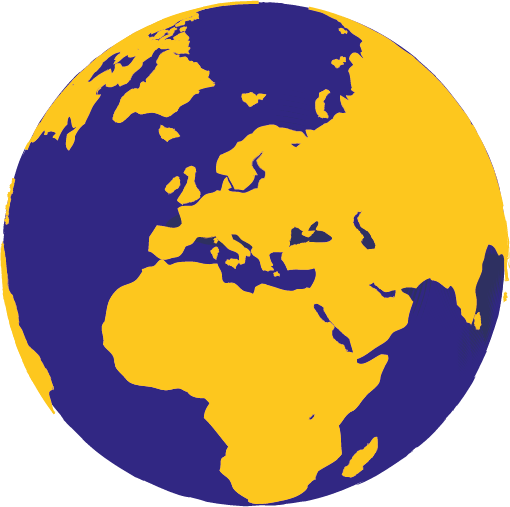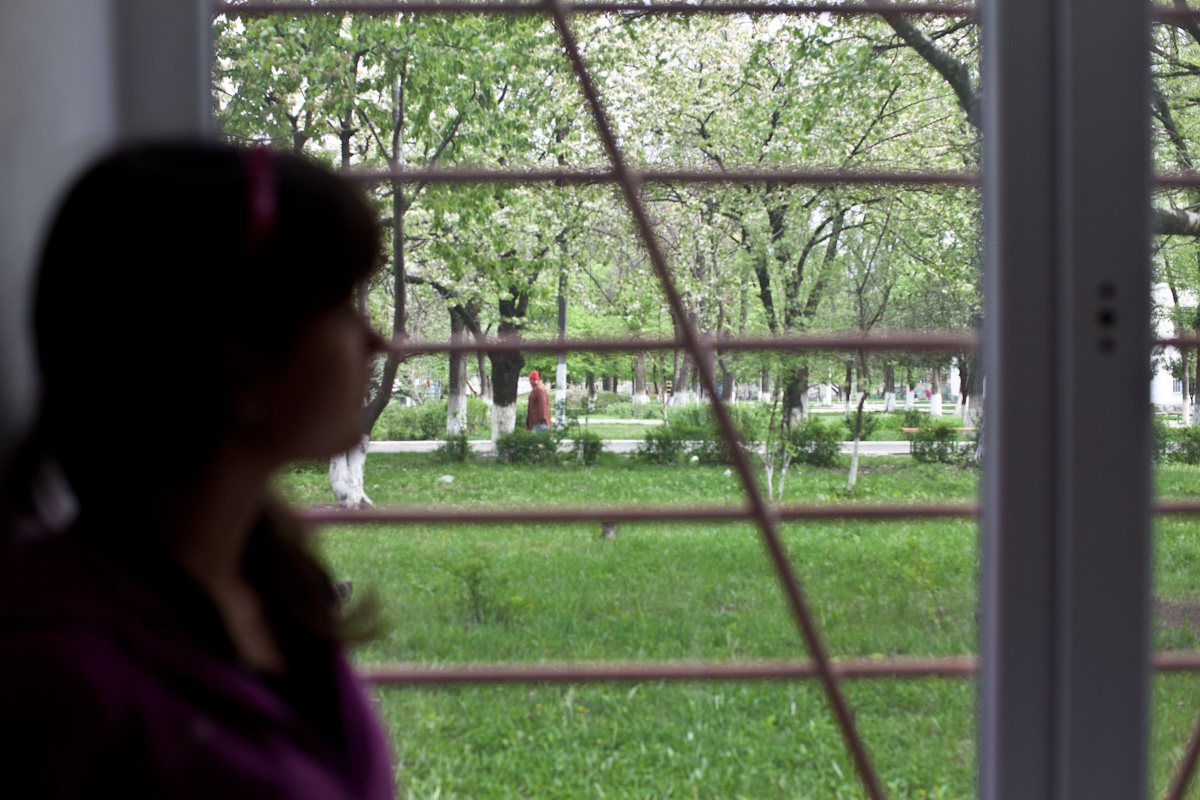Russia is the latest example of a global problem that must be solved
Millions of institutionalised children live in shadows and darkened rooms, hidden from the outside world, with no power over their lives and little hope of a better existence.
That is why the message of our name, Lumos, a source of light, is so powerful. Shining a bright light into the dark corners of institutions and so-called orphanages is a vital first step towards transforming the lives of vulnerable children.
So we wholeheartedly welcome the publication this week of a report by the international NGO, Human Rights Watch, which illuminates the scale and impact of institutionalisation of children with disabilities in Russia.
HRW have found that nearly 30% of all children with disabilities in Russia live in state orphanages where they may face violence and neglect. Around 45% of all children in these so-called orphanages have disabilities of some sort. They are ‘so-called’ orphanages because the vast majority of children in them have at least one living parent.
It is difficult, given the patchy information available in that vast nation, to put a reliable figure on the number of disabled children languishing in institutional care, but it would appear to run to hundreds of thousands. If correct, that would be the largest single population of institutionalised children in the CEE/CIS region.
It is in no way to diminish the HRW report to say that, while the scale of institutionalisation of children in Russia troubles us, we are not surprised by many of the findings.
They echo so much of our experience as an organisation - and indeed my own personal experience - of other nations. Over the past twenty-five years, I have seen similar conditions for children in Romania, Bulgaria, the Czech Republic and Moldova. In Ukraine, Sudan, Former Yugoslav Republic of Macedonia and Montenegro. In Croatia, Albania and Haiti. But we must not forget that Lumos colleagues who worked in the UK and US 40 years ago remember similar conditions for disabled children in institutions in our countries, too.
So, in Russia, as in other countries, we see the legacy of a combination of practices and beliefs that have such a devastating impact on children. Society stigmatises disability – a combination of a fear of the unknown and a belief that disabled people have no contribution to make to society. Parents give up their disabled children because of the influence of that stigma but also because medical professionals have persuaded them – wrongly - that they will not be able to cope, that their children have little prospect of developing meaningful lives and are ‘uneducable.’
Once in the institutions, we see time and again that less money is spent per child on disability institutions than on those for other children. Children, once institutionalised, enter a bizarre world where their value is measured in how much money the authorities are prepared to spend on their food, on people to look after them and even on heating in the winter.
Their disabilities are exacerbated by neglect, lack of stimulation and consequent developmental delays. The children become self-fulfilling prophecies as they fail to thrive and develop unusual behaviours – rocking back and forth, hand-flapping, even self-harming. Those running the institutions witness the children’s development and behaviours and believe they were right to assume these children had no future, no value. This leads to even less investment and I have found on many occasions a belief, not always spoken, that institution personnel are all simply waiting for the children to die.
In one instance, in a disability institution with a high mortality rate, when we asked the director why she thought so many children were dying of malnutrition in her institution, she explained: “You must understand, these children are sent here to die. The average life expectancy of one of these children is 11 years. If a child lives longer, we feel we have done an exceptionally good job”. When we observed the practices in the institution, we found that each child was given, on average, 1 minute 20 seconds to eat their meal. If we place so little value on the life of a disabled child, we should not be too surprised by the outcome. It should be noted that a simple intervention in that institution – training staff and helping them to reorganise their schedules, but most importantly, helping them to value the children and build up individual relationships – reduced the mortality rate to almost zero, while we helped the authorities move the children out into better services in the community,
These examples, and those from the HRW report, once again highlight a system which is dictated by the resources invested in institutions, not the individual needs of children – where often well-meaning staff do not have the time, resources and training to give children, particularly those with intellectual disabilities, the close, loving one-to-one adult engagement they need to prosper, and which they would get in a family.
We see in the HRW report the harsh reality of institutionalised/orphanage life. Children and children’s rights activists reported that in Russian orphanages children often lack access to needed health care, adequate nutrition, attention, and opportunities for play, and that many children receive little to no formal education. There are a significant number of babies in Russian institutional care – and we know that it is deeply harmful to baby development.
We see, overall, a huge system of institutional care which some may fear is too deeply entrenched to change – particularly in a country that is suspicious at times of ‘outside’ assistance.
However, at Lumos our experience shows that change is possible – even on such a large scale. The HRW report, though it sheds light on disturbing matters, in itself brings hope. It is welcome to note that HRW found a Russian Government willingness to change, and a national strategy to work towards transformation.
HRW considers the Russian Government should do far more, quicker, and makes a number of recommendations in its report - Abandoned by the State: Violence, Neglect, and Isolation for Children with Disabilities in Russian Orphanages.
The message from Lumos is that Russia is a large, complex and sophisticated nation with all the elements needed – resources and expertise - to transform its child-care system. Our experience in other nations with similar State-dominated care systems is that ‘the money is in the wrong place’ and, with careful planning backed by political will, children can be supported to move from orphanages and transferred into family and community-based care – above all reuniting many, many children with their birth families.
It is not for Lumos, or other NGOs in this field, to tell Russia how to run its systems or to suggest we can simply take the UK model, and that of other Western European nations, and transpose it into Russia.
But we can share with Russia our evidence from family and community-based models of care we have worked with governments to create in Moldova, Bulgaria and the Czech Republic. Russian officials may find the enthusiasm to change shown by their Moldovan counterparts is infectious.
Indeed, the process has already begun; a reassuringly large contingent of Russian professionals attended a week-long training course in ‘deinstitutionalisation’, which Lumos ran in August.
The Russian Government has ratified both the Convention on the Rights of the Child (CRC) and the Convention on the Rights of Persons with Disabilities (CRPD) – which, together, broadly enshrine the rights of children, with and without disabilities, to be raised in their families, included in their communities, with full access to health and education services, making it possible for them to grow into healthy, fulfilled adults who contribute to society.
Russian politicians, officials and care professionals will change in their own way, at their own pace, but we encourage them to remember that other nations in central and Eastern Europe have shown it can be done.
We must also remember that it is only a matter of time before the next report comes out on abuses of children’s rights in institutions. The report could come from any continent in the world. It is up to all of us – the international community – to develop a joint and comprehensive approach to ending institutionalisation across the world. Institutions are not necessary; they do not protect children, in spite of best intentions; and the work of Lumos, other NGOs and a number of governments has demonstrated that there is another way.



